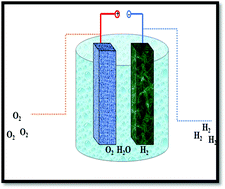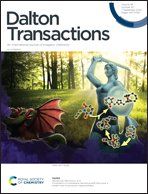Cobalt-based heterogeneous catalysts in an electrolyzer system for sustainable energy storage
Abstract
Nowadays, the production of hydrogen and oxygen focuses on renewable energy techniques and sustainable energy storage. A substantial challenge is to extend low-cost electrocatalysts consisting of earth-abundant resources, prepared by straightforward approaches that display high intrinsic activity compared to noble metals. The expansion of bifunctional catalysts in alkaline electrolytes for both the hydrogen evolution reaction (HER) and the oxygen evolution reaction (OER) has become very crucial in recent times. Herein, the recent progress in cobalt-based HER–OER electrocatalysts has been are brushed up and numerous bifunctional cobalt-based catalysts such as cobalt-oxides, phosphides, sulfides, selenides, nitrides, borides, carbides, perovskites, and MOF-based cobalt analogs have been investigated in detail. Specifically, much more attention has been paid to their structural variation, bifunctional activity, overpotential of the overall system, and stability. Cobalt-based catalysts with lower cell voltage, remarkable durability, and unique electronic structures, offer a new perspective in energy-related fields. In recent years, cobalt-based analogs with diagnostic facilities have been introduced due to their electronic structures, tunable d band structures, and tailorable active sites. This perspective also elucidates the present issues, promising ideas, and future forecasts for cobalt-based catalysts. The critical aspects of cobalt-based catalysts and the numerous opportunities, as discussed at the end, can possibly enrich the sustainable energy field.

- This article is part of the themed collection: 2020 Frontier and Perspective articles


 Please wait while we load your content...
Please wait while we load your content...